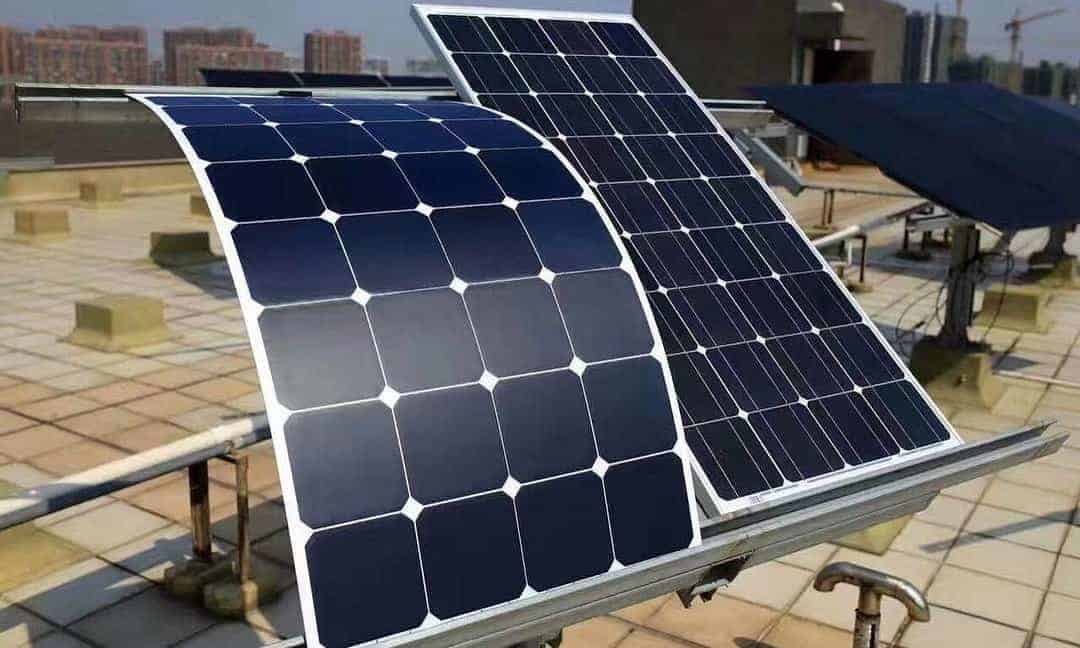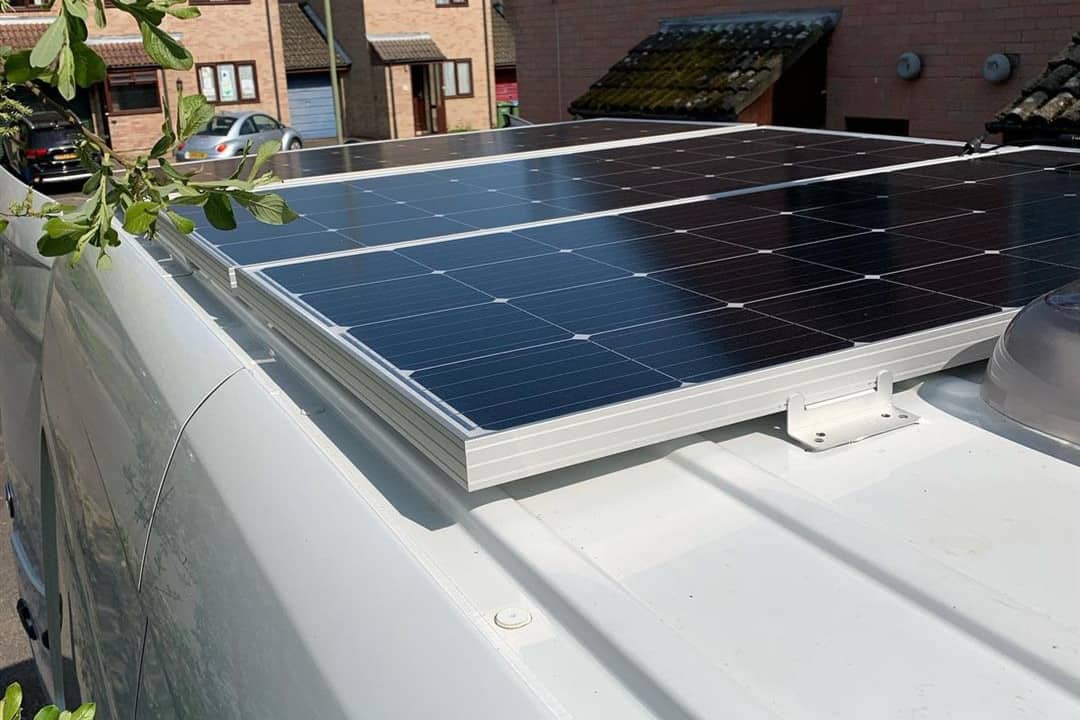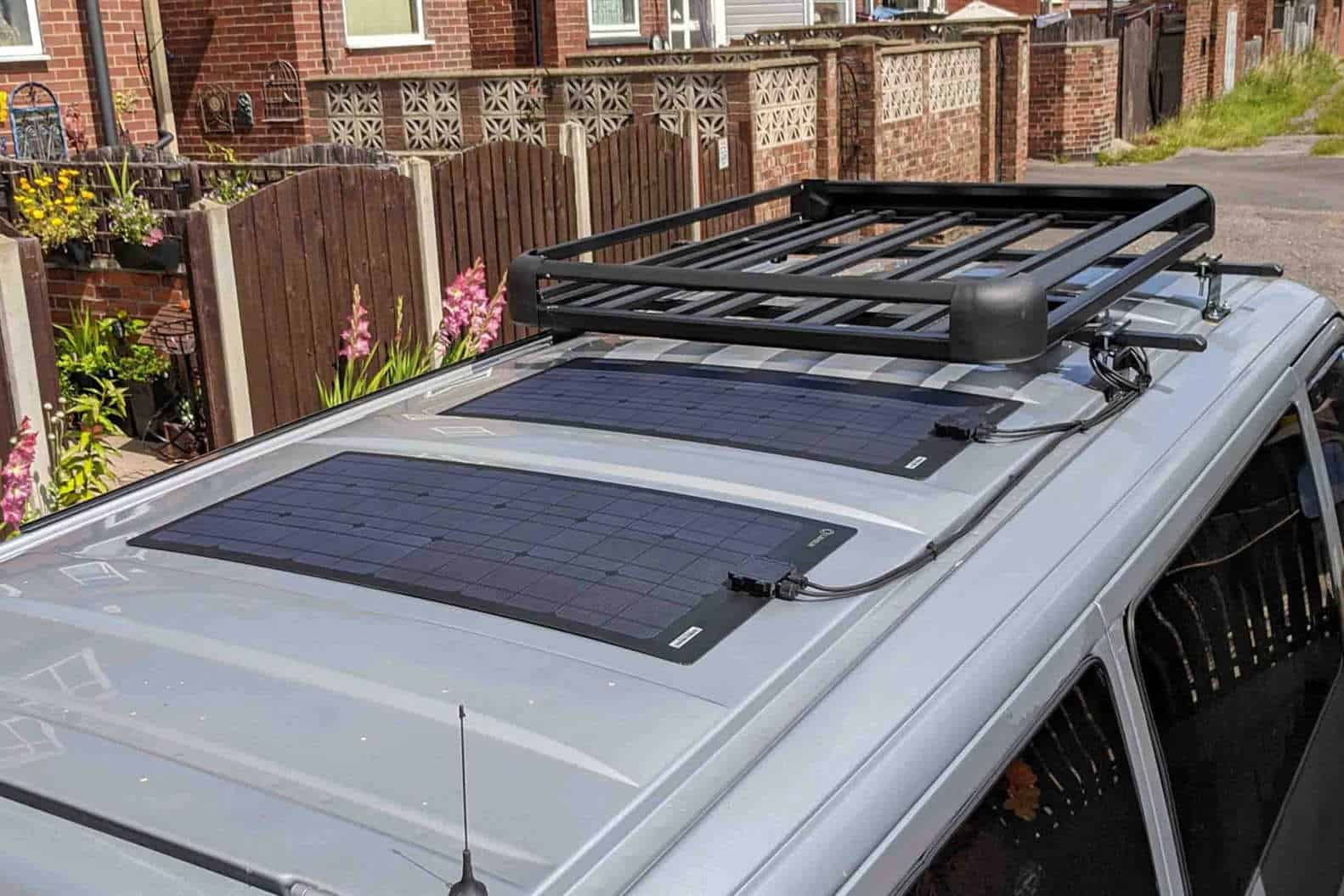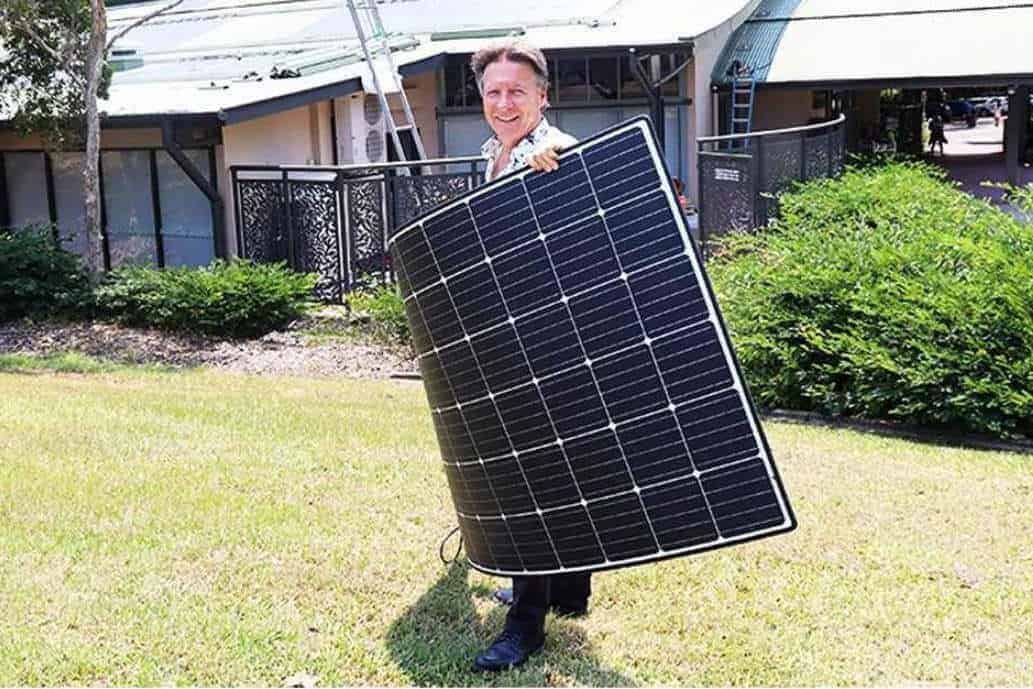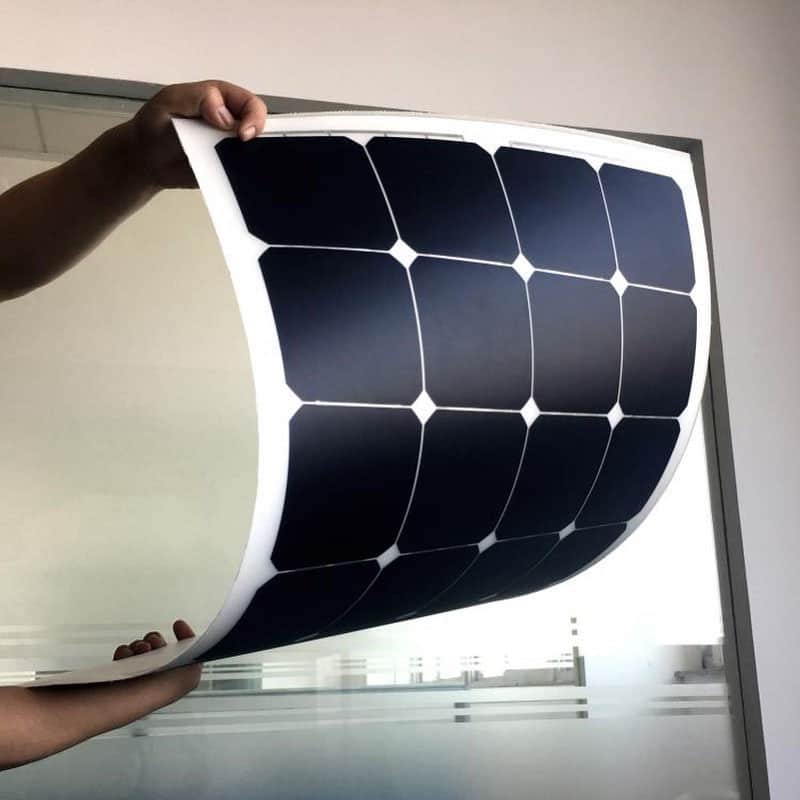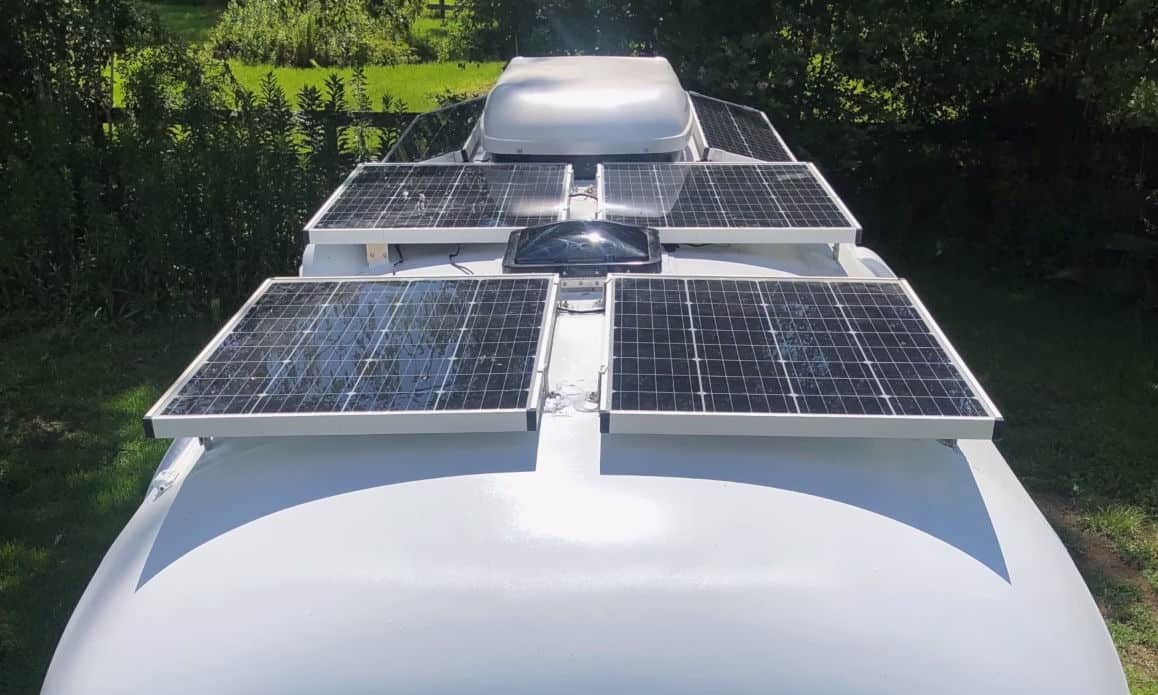The solar panels you see in home solar systems are almost always flat and rigid. Are you aware that there is another type of solar panel that doesn’t have to be flat? These flexible solar panels seem ideal for installing on curved surfaces, like the roofs of recreational vehicles.
But is one technology better than the other? There are some fundamental differences in how flexible and rigid solar panels work and how effective they are. Before you buy one or the other, I’m going to take you through the pros and cons of each type of panel so you can make an informed decision. So here’s a complete guide to flexible versus rigid solar panels.
Introducing the candidates
you probably already know that a solar panel comprises a series of photovoltaic or solar cells that convert light energy from the sun into electricity we can use. Now let’s take a look at the characteristics of the two types of solar panels this article will be comparing.
Rigid solar panels
Traditional solar panels are housed in a rigid aluminum case and covered with strengthened tempered glass to allow light through while protecting the solar cell inside. These framing materials create a tough and long-lasting unit that is waterproof and durable. Rigid solar panels are heavy, quite thick, and not very portable.
Flexible solar panels
Solar electricity is a field that has seen rapid advances in the past ten years, and one of these is the emergence of flexible solar panels. Recent advances in materials technology have allowed us to eliminate the rigid panel frame and replace the glass solar cell cover with clear plastic. While plastic isn’t as durable as glass, it has the significant advantage of being flexible.
The result of these changes is that these new flexible solar panels can be bent and affixed to curved or angled surfaces. These days we can make flexible solar panels that you can bend at angles of up to 50°.
Types of coating used in flexible solar panels
PET laminated – PET is a kind of polyester-based plastic used in the layers to cover and protect flexible solar panels. It is an economical solution but it isn’t as durable as the alternative.
ETFE or ethylene tetrafluoroethylene – ETFE is a human-made polymer based on fluorine. It has been designed with a combination of strength, flexibility, and ability to withstand high temperatures.
ETFE is the more durable of these two covering substances.
What are the advantages and disadvantages of flexible vs rigid solar panels?
Here, I will go through the characteristics of flexible and rigid solar panels and consider their relative advantages and disadvantages. Armed with this knowledge will be able to consider what you plan to use your solar panels for and all situations decide whether flexible or rigid solar panels will best meet your requirements.
Weight
A flexible solar panel weighs around 20% of a comparable rigid solar panel. This means that you can attach flexible panels to structures that wouldn’t support the weight of rigid panels.
The lightweight construction of flexible panels also makes them useful in places where weight contributes to energy usage. For example, if you put several heavy rigid solar panels on your recreational vehicle, you will add to its weight and increase your fuel usage. Flexible solar panels are a far more energy-efficient option for motor-powered vehicles.
Performance and Efficiency
Flexible solar cell technology has improved dramatically in recent times. In the past, flexible solar cells were markedly less efficient than rigid panels. But these days, you can buy flexible solar panels that are just as efficient as their rigid counterparts.
A good efficiency level to look for is in the region of 18 to 22%. This efficiency rating means that under ideal conditions, solar panels within this range will convert that same percentage of the sun’s light that they receive into electrical energy.
Flexibility
Flexibility is the raison d’être of flexible solar panels. You can’t bend rigid solar panels at all. Flexible solar panels, depending on the model, can be bent at angles of up to 50°, perfect for curved surfaces.
Before you get too excited about bending your flexible solar panels every which way, there is one important factor to bear in mind. Solar panels work best when pointed at the sun. That means that here in the northern hemisphere, south-facing solar panels are the most efficient electricity generators. It’s just as crucial that flexible solar panels should be positioned to capture as much sun as possible as it is with rigid panels.
Price
since flexible solar panels are a relatively new technology, you will pay around twice as much for a flexible panel as you will for a rigid one with that same power output.
This factor alone suggests that we should only use flexible solar panels when it’s not convenient to use rigid panels.
However, this price differential is unlikely to last. The aluminum, glass and other materials that make up the heavy frame of rigid solar panels cost quite a lot more than the lighter materials used in flexible solar panels. As manufacturing costs drop, we may see the price of flexible solar panels dropping below that of their rigid cousins.
Lifespan
the lifespan of flexible solar panels is one of their significant downsides.
The rigid solar panels used in home solar installations are exceptionally rugged and come with a twenty-five-year warranty.
In contrast, flexible solar panels typically offer a warranty of between one and three years. This short warranty doesn’t necessarily mean the product won’t last longer than this. Since most flexible solar panels are designed for use on the go, it is expected that they will undergo more wear and tear than rigid solar panels which usually remain in place.
However, if you have a PET laminated flexible solar panel, you should expect it to last a maximum of around five years. If you go for ETFE laminated panels, then, with care, you can expect them to last somewhere in the region of ten years.
Tips for making flexible solar panels last longer
- Clean gently and carefully using a soft sponge and plain water or a mild detergent. Even the scratches reduce the clarity and performance of solar panels.
- Bend the solar panels only when necessary and never beyond the specified tolerance
- Don’t place objects on flexible solar panels and never step on them
- Disconnect and store flexible panels when they’re not in use. Store them in a flat place and don’t place anything on top of them.
Ease of installation
Due to their lightness and the fact that they bend, it’s straightforward to install flexible solar panels.
Since you don’t need to attach heavy frames, you don’t need to damage the surface you’re mounting them on. This is useful if you’re placing solar panels on an RV, a boat, or any other surface you are reluctant to pierce.
However, if you’re putting flexible solar panels and moving objects, then make sure they’re not going to blow away. It’s essential to ensure that the edge of the flexible panel facing the direction you’ll be moving in is well secured and flush with the surface you’re mounting it on. Just a little air turbulence between the panel and the surface can quickly cause it to detach.
Where should I use flexible and rigid solar panels
Since rigid solar panels offer a much cheaper and long-lasting solar energy solution than their flexible counterparts, you should install them in all situations where their weight and rigidity don’t cause a problem.
These factors mean that rigid solar panels are still the go-to solution for home solar systems and most commercial and industrial solar power installations.
However, flexible solar panels are an exciting technology that offers easily portable solar generating capacity that is ideal for travel and recreational use. Flexible solar panels make a great addition to the roof of your recreational vehicle, caravan, or boat.
There may also be certain times when flexible solar panels are a good solution for static locations, for example, on curved walls or on roofs that lack the structural strength to carry the weight of rigid solar panels.
Quick Comparison of rigid and flexible solar panels
| Characteristic | Rigid Solar Panels | Flexible Solar Panels | Comments |
| Weight | Heavy | Light (1/5 the weight of rigid panels) | Lightweight, flexible solar panels are ideal for temporary installations or longer-term use on delicate structures |
| Efficiency | Good | Good | the efficiency of flexible solar panels has caught up with rigid |
| Flexibility | None | up to 50° | flexibility is good, especially for curved surfaces. Remember that panels need to point at the sun to work. |
| Price | Inexpensive | Expensive (2 x Rigid) | Rigid panels are still far more price-friendly than flexible panels |
| Lifespan | Long – 25 year warranties | Short – 1 to 3-year warranties | the much longer lifespan of rigid panels favors their use wherever possible |
| Installation | Complicated | Straightforward | the quick and easy installation of flexible solar panels makes them ideal for outdoor and temporary use. |
If you have any comments or questions about flexible vs rigid solar panels, please share them with us below.

